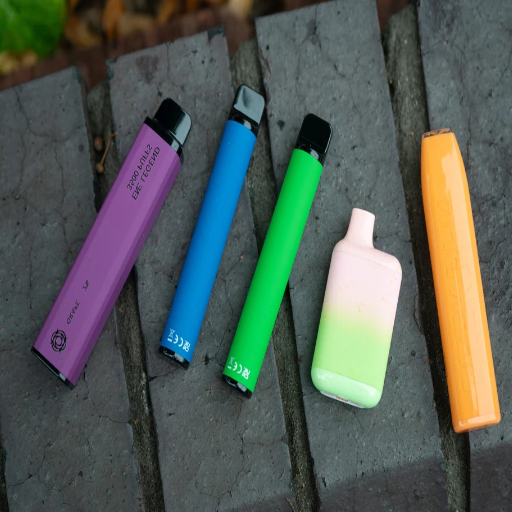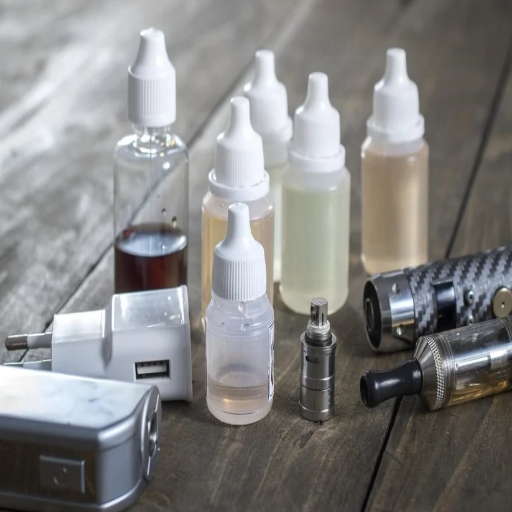When transitioning from traditional smoking to vaping, one common question arises—how many puffs should one take while vaping as opposed to smoking a cigarette? This question is often grounded in the desire to understand the key differences between the two methods of nicotine delivery, including differences in nicotine intake, health implications, and user behavior. While the act of smoking is generally standardized to a set number of puffs per cigarette, vaping introduces a more variable framework influenced by device types, e-liquid nicotine concentrations, and individual usage patterns. This article provides a detailed analysis, comparing the puff count in smoking and vaping, while also considering the broader implications for individuals seeking to switch or reduce nicotine consumption.
How Many Vape Puffs Equal One Cigarette?

Comparing Nicotine Per Puff Between Vaping and Smoking
Inhalation and combustion factors lead to the body absorbing only 1-2 mg of the 10-12 mg that a cigarette contains on average. Each puff of a cigarette delivers an equal amount of nicotine, which is the reason for establishing a fairly reliable nicotine supply system.
- E-Liquide Nicotene Concentration: Salts of nicotine e-liquide are available in the strength range from 3 mg/mL (low strength) to 50 mg/mL (high strength).
- Device Power Output: Increased power output tends to result in increased vapor production in advanced vape devices. This results in increased nicotine supply per puff.
- Absorption Efficiency: E-liquides tend to get absorbed over a period of time personally, while cigarettes’ use an arterial absorption method which is much faster.
Based on vaping habits and the hardware being used, it can be said with moderate certainty that around 10-15 puffs of moderate-strength e-liquid (around 12 mg/mL) will deliver a dose of nicotine equal to one cigarette.
How Many Puffs of Vape to Match a Smoking Cigarette
To analyze how many puffs of vape equal smoke from one cigarette, there are many distinct particulars to consider, such as the nicotine content in the e-liquid, the efficiency of the device, and the vaping behavior.
- Nicotine Strength in E-Liquids: The average nicotine strength from moderate e-liquid vapor is around 12 mg/mL. This factor is important for consideration as it will determine how much nicotine is given for every puff.
- Device Effective: Not all vaping hardware is the same, some devices are advanced. Higher powered devices like some with higher wattage or advanced coil systems can vaporize more liquid per puff which will effect the total amount of nicotine delivered.
- Count and Volume: It takes approximately 10 to 15 puffs of 12 mg/mL e-liquid to absorb the same amount of nicotine from one cigarette. This estimation assumes that each puff is about 50 to 70 mL of vapor which is the average volume for moderate users.
Overall, vaping does deliver nicotine but feels distinctly different than cigarettes as it has a slower absorption rate.
Is There a Limit to How Many Puffs I Should Take on a Vape?

Understanding E-Liquid Consumption and Puff Count
- Nicotine Strength: The nicotine concentration in my e-liquid is critical. For instance, my 12 mg/mL e-liquids provide roughly 1mg of nicotine for 10 to 15 puffs, estimated from an average puff of 50 to 70mL.
- Puff Volume: A puff I take usually is in the range of 50 to 70mL which is the average for moderate users. This differs with lung capacity and airflow available from the device.
- Device Efficiency: The kind of device used is also important. More powerful devices produce more vapor and therefore nicotine, so they may be more efficient in providing the desired amount of nicotine to the user in fewer puffs.
I adjust the total number of puffs taken out of the vape device to achieve the desired concentration of nicotine while also avoiding overconsumption. This aids in achieving order without extending too far beyond the set limits of vaping.
When Too Many Vape Hits Might Be Harmful
The excessive use of vapes has severe implications for one’s health stemming from the irresponsible use of nicotine and other harmful substances found in e-liquids. The major concern is perhaps nicotine poisoning which can result in symptoms such as nausea, vomiting, heart palpitations, and even dizziness. The limit to which a person can consume nicotine is dependent on the dose of nicotine found in the e-liquid, the effectiveness of the vaping device, and the tolerance of the user. For instance, the use of very powerful devices paired with e-liquids of 50mg/mL can result in users consuming an unprecedented amount of nicotine which would lead to severe consequences.
- Device Power: Increased power results in the production of more vapor or nicotine per puff making the device more effective.
- Puffing Patterns: The number of puffs and the duration of each puff are significant to measure one’s exposure.
- Speed of Nicotine Absorption: Refers to how individual characteristics like weight, metabolism, or tolerance determine how fast nicotine is absorbed.
When a vigilant eye is kept on these factors along with moderation, the health risks concerning vaping can be minimized.
Tracking Your Daily Puff Count for Health Reasons
Tracking the daily exposure to nicotine through puffing, is vital for determining health risks. My tracking system begins with monitoring the number of puffs per day as well as the amount of time it takes to finish a single puff.
- Puff Count: The total number of puffs taken per day.
- Puff Time: The total time in seconds taken to complete a single puff.
- Nicotine Level: The amount of nicotine present in the e-liquid, which is usually noted in mg/mL.
- Device Power: The wattage or voltage of the vaping device that dictates how much nicotine is delivered into the body.
Managing these habits is crucial in lowering health risks and controlling unhealthy vaping habits.
How Does Vape Device Type Affect The Number of Puffs?

Disposable Vape Puffs vs Refillable Vape Kits
In assessing the convenience options of disposable vape devices with refillable vape kits, I look at the technical aspects and model impacts.
Disposables have the most simplistic design which makes them easy to use. They come pre-filled with e-juice and a predetermined level of nicotine, usually between 2% to 5% by volume (20mg/mL to 50mg/mL). The battery life and e-liquid volume are proportionate where the puff count falls somewhere in the range of 200 puffs to 800 puffs per device depending on the device style. These devices tend to have a fixed power output, usually within the 7 to 12-watt range, guaranteeing reliability up until the device is drained.
Refillables do offer more flexibility and are more economical in the long run. The vaporizers give the user the option to choose nicotine strength (usually non-detectable to over 12mg/mL) and e-juice types of their choosing. Most refillable kits allow variable wattage, often seen from 5 watts to over 80 watts, giving the user full control of the nicotine and vapor production. They need more maintenance to work such as coil changes and e-juice refills, making them ideal for advanced users.
Knowing these factors, I assess that disposable vapes are unmatched in portability and accessibility, while refillable kits give better control over the vaping experience.
How Vape Pen Settings Impact Your Puff Intake
Settings of the vape pen directly influence the number of puffs as well as their quality. In my opinion, parts that ought to be painstakingly studied are the: wattage, airflow, and viscosity of the liquid.
- Wattage: Greater wattage will, indeed, lead to a greater volume of vapor created, but it will also lead to lesser puff counts because e-liquid is consumed more rapidly. For example, if you set the wattage to 10 it is plausible you would get more puffs as compared to 50 watts, given both settings have the same level of e liquid.
- Airflow: Looser airflow contributes to vapor output, allowing for larger clouds, but it also causes the increase in draw of liquid per puff, meaning lesser total puffs are possible. Tighter airflow does the opposite, saving e liquid by restricting draw strength.
- Liquid Viscosity: E liquids which have higher values of VG (vegetable glycerin) result in thicker vapor being produced, reducing the overall puff counts when compared to thinner, PG dominant (propylene glycol) liquids. A liquid blend containing 70% VG will behave differently than a liquid which is a blend of 50/50 PG/VG impacting the vapor and the durability of the usage.
Based on my research, changing these factors permits users to customize their vaping experience and further improve their device’s effectiveness. Users who desire longer times should use tighter airflow and lower wattage.
Vape Juice Strength and Its Effect on Puffing Frequency
The potency of vape juice, particularly the concentration of nicotine, has a bearing on the frequency of puffing. The higher the concentration of nicotine, which is typically measured in milligrams per milliliter (mg/mL), the stronger the throat hit and the quicker the satisfaction of nicotine craving, and as such puffing frequency is reduced. For instance;
- Low Strength (3-6 mg/mL): Appropriate for sub-ohm vaping due to higher vapor production. The Users’ nicotine absorption with each puff is relatively low, leading to increased frequency of puffing.
- Medium Strength (12-18 mg/mL): Used with regular vape setups and provides a balanced experience without requiring excessive puffs.
- High Strength (20+ mg/mL): Found in nicotine salts or pod systems. These types deliver nicotine quickly and efficiently, causing drastic reductions in puffing frequency.
Together with user preferences, the stronger juice also interacts with specific device settings such as wattage and airflow. Higher nicotine levels with lower wattage reduce excessive vapor production, hence providing a satisfactory experience.
Tips for Transitioning from Smoking to Vaping

Finding the Right Puff Pattern When You Quit Smoking
Setting the right puff pattern is essential when making the shift from smoking to vaping. I enacted my typical pattern of smoking at the start and later adjusted to the slower, softer, as well as smoother drags required when vaping. These help with the heating of the device to ensure vapor production.
- Device Wattage: With lower strength e-liquids (6-12 mg/mL), I set my device at a range of 10-15 watts which provided a smooth experience while not overheating or being too harsh.
- Airflow Settings: Tightening the airflow made it easier to meet the resistance experienced when drawing from a cigarette. This is preferred for individuals who are struggling with smoking.
- Nicotine Strength: In trying to address my cravings, I started with medium-strength vapes (12-18 mg/mL) and adjusted according to how frequently I was utilizing the vape.
- Puff Duration: Optimal feel and vaporization was achieved with 3 to 6-second puffs which led to an achievement in flavor delivery.
With the introduction of these adjustments, my rhythm was built to comfortably move away from smoking while still satisfying cravings.
Adjusting Nicotine Consumption Between Cigarettes and Vapes
Changing the level of nicotine intake required keen attention to many facets to achieve the desired effect. To begin with, I tracked my nicotine consumption by estimating the nicotine intake from cigarettes (which I estimated to yield around 1-2 mg) relative to my vape usage. For a vape containing 12-18 mg/mL of nicotine, I assumed that 1 mL multiplied by 12-18 mg equated to 12-18 mg of nicotine. This helped me regulate my vape usage to keep pace with the cigarette consumption, so my cravings would be attended to.
- Strength Of Nicotine: Moderates from a medium-level vaped nicotine concentration (12-18 mg/mL) was equilibrating with smoking but required gradual cuts as a softening of dependency set in.
- Frequency Of Puff: Knowing the frequency of inhalation in a day that I took puffs per day helped me cope with or slowly withdraw from cigarette behavioral patterns.
- Liquid Intake: Using roughly 1 mL of vape juice per cigarette gave a standard relatable to nicotine dosage.
- Device Power: Confirming proper vapor delivery from the device ensured that errors attributed to inadequate and/or excessive absorption were minimized.
Through constant monitoring of such elements, I was able to maintain control of my nicotine levels and subsequently watched my reliance on conventional cigarettes decrease.
How Many Puffs to Take When First Switching to Vaping
Calculating the number of puffs required for relapsing into nicotine addiction from cigarettes while vaping one puff at a time proved to be quite the challenge. Initially, I sought to match the nicotine I used to consume with cigarettes. For that, I guessed the average number of puffs per cigarette was around 10-15 and multiplied it by the amount of cigarettes smoked each day.
- Nicotine Strength: Matched the strength about the former dependency on cigarettes.
- Puffs per Day: Split the total estimated puffs through a given session to avoid over or under-consumption.
- Wattage Settings: For accurate mimicking of the cigarette inhalation experience, the wattage (10 to 15W for mouth-to-lung devices) had to be set, ensuring that there was a good amount of vapor production.
With the aid of reducing these factors gradually enabled me to systematically withdraw from nicotine while continuously satisfying my addiction without feeling any disappointment.
Understanding Vape Puffs and Nicotine Delivery

How Much Nicotine You Get Per Vape Puff
- Nicotine Concentration in E-Liquid: The e-liquid I was using had 12 mg/mL concentration. This matched my previous smoking dependency. Hence, with each puff delivered, a portion of this nicotine is released with higher doses delivering more.
- Puff Duration: I tracked my puff durations which typically ranged between 2-4 seconds since longer puffs leads to higher vapor and nicotine volume inhaled.
- Device Output: The wattage on my device was set to 12W which gives a constant output of vapor without overheating the coil or excessive delivery of nicotine.
- Efficiency of Delivery: There is a universal fact that with smoking, the absorption of nicotine is far less efficient while it is with vaping. From the studies in vaping research, I assumed approximately 50% of the nicotine in a puff is effective which meets vaping research expectations.
Utilizing these factors combined, I presumed I was meeting my dosing goals of optimal nicotine concentration per puff while keeping device settings consistent with my needs.
Comparing Vaping and Smoking Nicotine Efficiency
The rate of nicotine absorption through smoking is higher relative to vaping due to the presence of combustion products that allow for better lung absorption. Research shows that with cigarette smoking, 90-100% of the inhaled nicotine is almost always absorbed. Vaping, on the other hand, does not perform as well with an absorption rate approaching 50% because of differences in particle size and all the accompanying components in the aerosol.
- Nicotine concentration: Ordinary cigarettes have an average of 10-12 mg of nicotine, of which 1-2 mg is utilized by the body per cigarette. In my case, the concentration in the e-liquid for vaping was 12 mg/ml but factoring in the 50% absorption, the effective intake per puff is lower.
- Efficiency in Absorption: The absorption of e-liquid aerosols through vaporization is approximately 50% whereas smoking has a substantially higher absorption efficiency of 90-100% due to the lung’s receptiveness to combustion-related particles.
- Puff: The average length of inhalations is about 2 seconds per puff which is about the same as how long I spend while vaping. However, smoking tends to have a higher delivery of nicotine per puff due to the medium used in combustion.
- The effectiveness of cigarettes in delivering nicotine: The act of cigarette smoking produces hundreds of chemicals that serve purposes that make nicotine more bioavailable. The lack of these by-products in vapor cigarettes greatly accounts for the difference in efficiency in cigarette smoking and vapor cigarette usage.
When these variables are controlled for it becomes clear that there is great inefficiency when it comes to vaping and smoking. Although vaping provides greater control over settings and intake, it will always be less effective than smoking.
Reference sources
Frequently Asked Questions (FAQs)
Q: How does the number of vape puffs compare to smoking cigarettes?
A: The number of vape puffs can vary significantly compared to smoking cigarettes. While a traditional cigarette may require around 10-15 puffs, a vaper might need somewhere between 30-50 puffs to ingest a similar amount of nicotine. This is because vape e-liquids contain nicotine in different concentrations, and the delivery mechanism can differ.
Q: How many puffs a day is normal for a vaper?
A: There is no one-size-fits-all answer to how many puffs a day is normal, as it depends on individual nicotine intake needs and the strength of the vape liquid. Many vapers take multiple puffs throughout the day, and a common range might be anywhere from 100 to 300 puffs a day. It’s important to find a balance that satisfies your cravings without excessive nicotine intake.
Q: How many puffs on a vape equal one cigarette?
A: On average, it might take 10-20 puffs on a vape to equal the nicotine intake of one traditional cigarette. However, this can vary based on the concentration of nicotine in the vape liquid and the efficiency of the vaping device. Understanding your device and the strength of your e-liquid is crucial to approximate this comparison.
Q: Does a vape contain nicotine like traditional cigarettes?
A: Yes, most vape e-liquids contain nicotine, similar to traditional cigarettes. However, the concentration of nicotine in vape liquids can vary widely, allowing users to control their intake more precisely. Some e-liquids are available that do not contain nicotine at all.
Q: How many hits or puffs are in a typical vaping session?
A: A typical vaping session can consist of anywhere from 10 to 30 puffs, but this can vary based on personal preference and the strength of the vape liquid. Some users prefer to take a few puffs periodically throughout the day, while others may take many puffs during a single session.
Q: What is the nicotine intake from 1000 puffs of a vape?
A: The nicotine intake from 1000 puffs of a vape depends on the nicotine concentration in the vape liquid. If the liquid has a high nicotine content, 1000 puffs can be equivalent to smoking many cigarettes. It’s essential to understand the nicotine level of your e-liquid to monitor your intake effectively.
Q: How do vaping devices influence the number of puffs needed?
A: Vaping devices can significantly influence the number of puffs needed to achieve a desired nicotine intake. Devices with higher wattage or more efficient delivery systems may provide more nicotine per puff, reducing the total number of puffs needed. Conversely, less efficient devices may require more puffs to ingest a similar amount of nicotine.
Q: Can you estimate how many puffs per vape session are equivalent to smoking a pack a day?
A: Estimating the number of puffs equivalent to smoking a pack a day (20 cigarettes) involves several factors. If one cigarette equals approximately 10-15 puffs, a pack would be 200-300 puffs. Vapers might need somewhere between 300-600 puffs a day to match this nicotine intake, depending on the e-liquid strength and device efficiency.
Q: What should new vapers know about nicotine intake and puffs per day?
A: New vapers should be aware that nicotine intake can vary based on the strength of the vape liquid and the device used. It’s advisable to start with a moderate nicotine level and adjust according to your cravings and comfort. Monitoring the number of puffs per day can help manage nicotine intake effectively.







